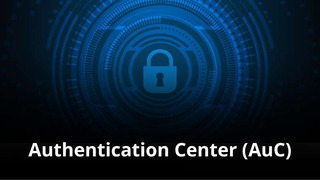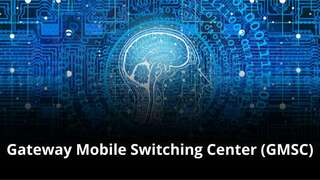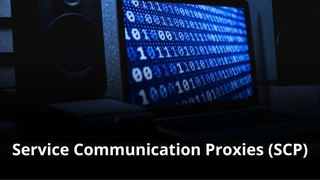Introduction about the Authentication Center (AuC)
The Authentication Center (AuC) is a critical and foundational security component within the architecture of 2G and 3G Global System for Mobile Communications (GSM) core networks. Understanding its purpose is essential for comprehending how legacy mobile systems securely verified the identity of the mobile user. This center acts as the central, highly secure database that holds the secret key Ki for every subscriber’s SIM card and is responsible for generating the necessary security parameters for authentication and encryption. You will find it crucial for any operator aiming to ensure network security and prevent fraud such as SIM cloning.
What are the details of an Authentication Center (AuC)?
- History and Evolution of the Authentication Center
- Core Utility and Functionality of the AuC
- Technical Integration and Data Model
- AuC Ownership for MVNOs and IoT Companies
- Organizational Impact of AuC Ownership?
- Redundancy and High Availability
- Impact of 4G, 5G, and 6G on the AuC
- Frequently Asked Questions about the AuC
- Summary
History and Evolution of the Authentication Center
The concept of a central security key repository began with the inception of the GSM standard (2G). This standard introduced the Authentication Center (AuC) as the primary system for ensuring only valid subscribers could access the network. The AuC’s original design focused predominantly on supporting the generation of security triplets (Random number, Signed Response, and Cipher Key) for the 2G authentication process.4 This process was fundamental to the security model of the 2G era. As networks evolved into 3G (UMTS), the AuC adapted to generate security quintuplets (for a more robust authentication process). Its architecture, however, remained geared towards the secure storage of the Ki. Eventually, the AuC’s functionality was expanded and often integrated with the HLR into the Home Subscriber Server (HSS) to fully support the demands of the 4G (LTE) packet core. The evolution is:
Core Utility and Functionality of the AuC
What is the AuC Used For?
The Authentication Center (AuC) is the definitive source and generator of security material within a 2G/3G mobile network. Its primary purpose is to hold the secret key Ki for every SIM card it manages. It is crucial for managing two critical security tasks: user authentication and air interface encryption. It is the system that confirms the mobile user is who they claim to be, by challenging the SIM card with data that only the SIM and the AuC know how to process. Deploying an AuC is necessary to ensure users can connect, authenticate securely, and have their communication encrypted over the radio path.
Key Functions of the Authentication Center
Investigate the core functions of the Authentication Center (AuC) to understand its critical role in network security:
- Secret Key Ki Storage: It securely and permanently stores the secret individual authentication key associated with each subscriber’s SIM card.
- Authentication Parameter Generation: It executes the proprietary authentication algorithm to generate the authentication vectors (triplets/quintuplets).
- Cipher Key Generation: It produces the Cipher Key (Kc) or (Ck) necessary to encrypt the voice and data communication over the air interface.
- Security Triplet/Quintuplet Supply: It supplies the necessary security data to the serving Mobile Switching Center (MSC) or Serving GPRS Support Node (SGSN) upon request.
- IMSI and Ki Association: It maintains a secure, one-to-one mapping between the International Mobile Subscriber Identity (IMSI) and the subscriber’s secret Ki.
- Challenge-Response Data: It generates the necessary challenge data (RAND) and expected response (SRES) used by the serving network element.
- SIM Card Security: The AuC is the core mechanism used to prevent the cloning of SIM cards and unauthorized network access.
- Security Interfacing: It manages the secure communication link (via MAP/Diameter) with the HLR/HSS and the serving MSC/SGSN.
- Data Protection: It implements strict physical and digital security measures to protect the Ki database from unauthorized access.
Technical Integration and Data Model
Integration with Other Systems
The Authentication Center (AuC) does not operate in isolation; it is a centrally connected network element.21 Examine its key integration points to appreciate its centrality in 2G/3G security systems. In 2G/3G, it is often co-located with or directly integrated into the HLR. The HLR acts as the intermediary, requesting the authentication vectors from the AuC and forwarding them to the serving Mobile Switching Center (MSC) or Serving GPRS Support Node (SGSN) when a subscriber attempts to register or initiate a service. In 4G/5G, this function moves to the Authentication Server Function (AUSF) and is integrated with the HSS/UDM.

Technical Data Model and Key Interfaces
The Authentication Center (AuC) employs a highly secure Technical Data Model. This model dictates how the IMSI and its associated secret key (Ki) are organized and protected, facilitating fast, on-demand security vector generation. Key interfaces utilized by the AuC are predominantly based on the Signaling System 7 (SS7) protocol suite. Specific SS7 application parts utilized include:
- Mobile Application Part (MAP): This is used for communication with the HLR for the procedure known as “Send Authentication Info,” allowing the HLR to retrieve the security vectors.
- Proprietary Interfaces: Due to the extremely sensitive nature of the Ki, the AuC’s internal interfaces and connections to the HLR/HSS are often proprietary and feature extremely high levels of encryption and physical security.
AuC Ownership for MVNOs and IoT Companies
Why Own an AuC?
For a Full MVNO or an IoT company that issues its own SIM cards, owning a dedicated Authentication Center (AuC) (or its modern equivalent, the AUSF) is mandatory because the secret key Ki of the SIM card must be securely stored in the operator’s AuC database during the SIM’s personalization process. Owning it allows these companies to gain complete control over the security of their customer identity, the encryption of their communications, and the entire SIM lifecycle. This level of security and control is not possible when relying on a host MNO for authentication, as the host MNO would need to store the MVNO’s Ki data, which is a major security and commercial liability.
Advantages and Disadvantages of AuC Ownership for MVNOs/IoT Companies
Ability to Issue Own SIMs and control the entire SIM lifecycle from manufacturing.
Complete Security Control over all subscriber Ki and encryption keys.
Full Independence from the MNO for the most critical security function.
Enhanced Fraud Prevention by directly managing and monitoring authentication requests.
Customized Authentication for specific services (e.g., IoT device identity).
Extreme Security Requirements for physical and digital data protection.
High Initial Investment in highly specialized, secure hardware/software.
Operational Complexity requiring expertise in cryptography and security protocols.
Maintenance and Upgrade Costs for a mission-critical, high-security system.
Regulatory Compliance burden for managing high-risk subscriber data.
Organizational Impact of AuC Ownership
Analyzing the impact of integrating an AuC (Authentication Center):
Operational Impact: Requires specialized security and network operations teams with deep expertise in cryptography and legacy signaling protocols like SS7/MAP. Strict, often manual, security procedures are needed for managing and backing up the K-key (master secret key) database and ensuring its physical and digital security.
Technical Impact: The AuC must be tightly integrated with the HLR/HSS and requires deployment on highly secure, tamper-resistant hardware (like Hardware Security Modules – HSMs) to protect the master keys. It must handle high volumes of authentication requests via low-latency Diameter or MAP interfaces, often requiring dedicated signaling links.
Financial Impact: Involves significant Capital Expenditure (CapEx) for purchasing specialized, high-security hardware (HSMs) and software licensing. The primary financial justification is revenue protection; owning the AuC eliminates potential revenue loss from mass SIM cloning and fraud, and it avoids high fees from the host MNO for providing authentication services.
Security Impact: The AuC holds the uncompromisable secret for every subscriber. It is the highest-value security target in the 2G, 3G 4G core. Robust physical security, network segmentation, and strict access control are mandatory to prevent SIM cloning and mass-scale fraud.
Redundancy and High Availability

The Authentication Center (AuC) is the single point of truth for network access security; therefore, Redundancy and High Availability (HA) are absolutely critical requirements. Implement a fully redundant system architecture, which is usually achieved through clustered, active-active database replication with mandatory geographical redundancy. This design ensures that the authentication keys and vector generation capability remain operational even during catastrophic site failure. Methods like geographical redundancy are standard practice for this element due to the catastrophic consequences of a failure. The system must also employ rigorous database encryption and access control mechanisms. These mechanisms guarantee that the highly sensitive Ki data is protected from internal and external threats, maintaining operator liability standards.
Impact of 4G, 5G, and 6G on the AuC
AuC’s Transition
With the arrival of 4G (LTE), the dedicated Authentication Center (AuC) was largely integrated with the HLR into the Home Subscriber Server (HSS). The HSS handles the storage of the Ki and the generation of authentication vectors using the Evolved Packet System-Authentication and Key Agreement (EPS-AKA) algorithm. The separate AuC mainly continues to exist today to support legacy 2G and 3G access networks or for backward compatibility.
5G and 6G Architecture
In the 5G core, the authentication function has evolved into the Authentication Server Function (AUSF), which works closely with the Unified Data Management (UDM). The UDM stores the subscriber’s permanent security data the Ki, and the AUSF executes the 5G-AKA algorithm to perform the authentication procedure. The concept will further evolve in 6G towards more distributed, cloud-native solutions, but the fundamental role of securely storing the secret key and generating authentication parameters—the core function of the AuC—will always remain necessary for network security.
Frequently Asked Questions about the Authentication Center
1. What is the main function of the AuC?
The primary function is to securely store the secret key Ki of the SIM card and generate authentication and encryption parameters (triplets/quintuplets).
2. What is the Ki?
The Ki (Key Individual) is a 128-bit secret key permanently embedded in the SIM card and stored securely in the AuC; it is never transmitted over the network.
3. How is the AuC related to the HLR?
The AuC is typically co-located with or integrated into the HLR. The HLR is the network element that requests the authentication parameters from the AuC and forwards them to the serving MSC/VLR.
4. What are Triplet/Quintuplet security vectors?
These are sets of security parameters generated by the AuC RAND, SRES, Kc used to authenticate the SIM and provide an encryption key for over-the-air communication.
5. Why must a Full MVNO own an AuC?
A Full MVNO must own its AuC to securely store the Ki data of the SIM cards it issues, ensuring complete control over subscriber identity, security, and the SIM lifecycle.
Summary
The Authentication Center (AuC) is the central, authoritative security component that securely manages the secret key Ki for all subscriber identities in 2G and 3G mobile core networks. For a Full MVNO, acquiring and operating an AuC (or its modern equivalent, the AUSF/integrated HSS) is essential because it dictates the MVNO’s ability to issue its own SIM cards and manage its own security, providing full independence from the host MNO for the most critical security function. This decision involves substantial capital expenditure and requires specialized security and cryptographic expertise. While the AuC is replaced by the AUSF in 5G, its conceptual role—that of the master security key repository—is fundamental to all generations of secure mobile communication.

























